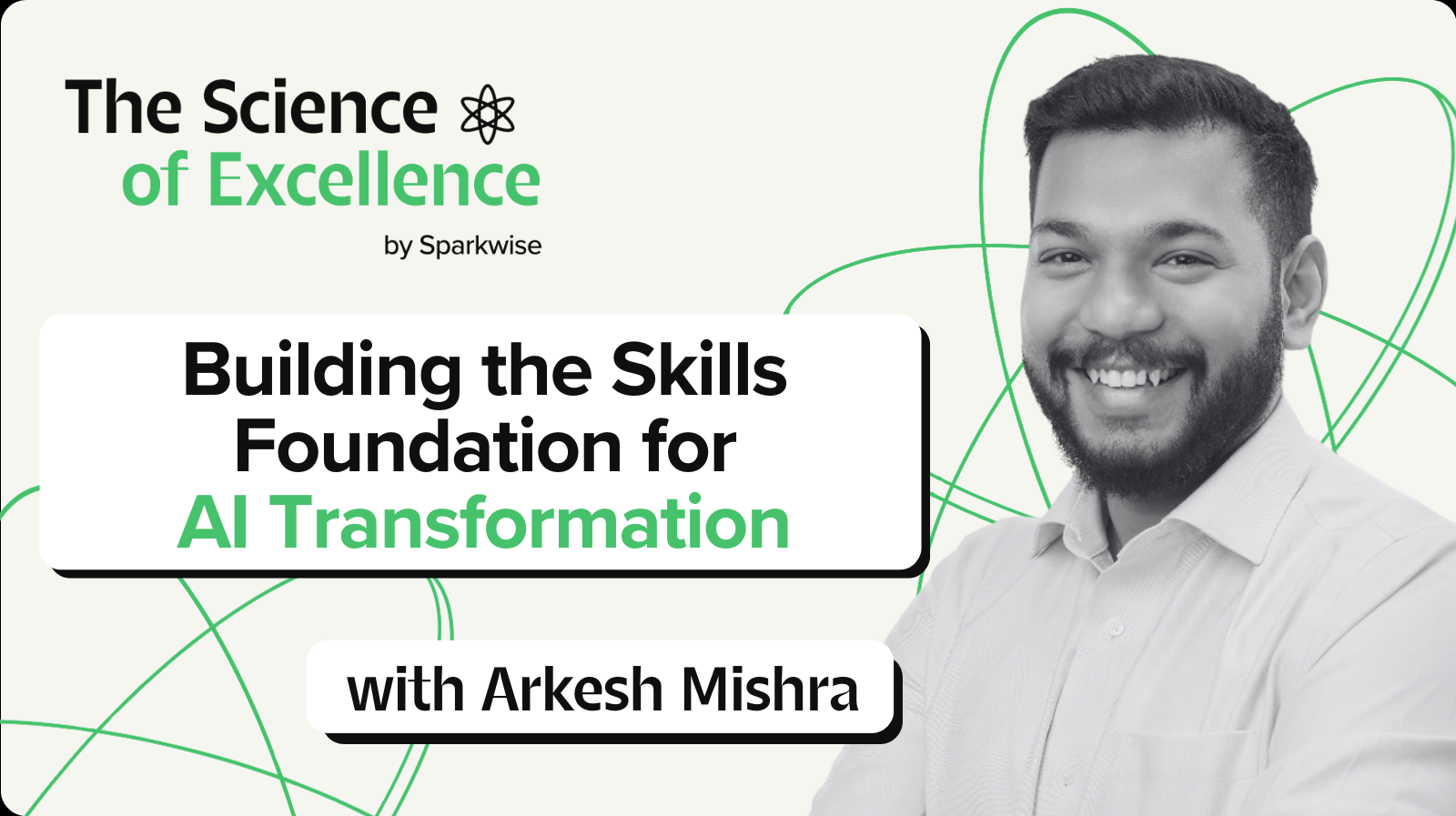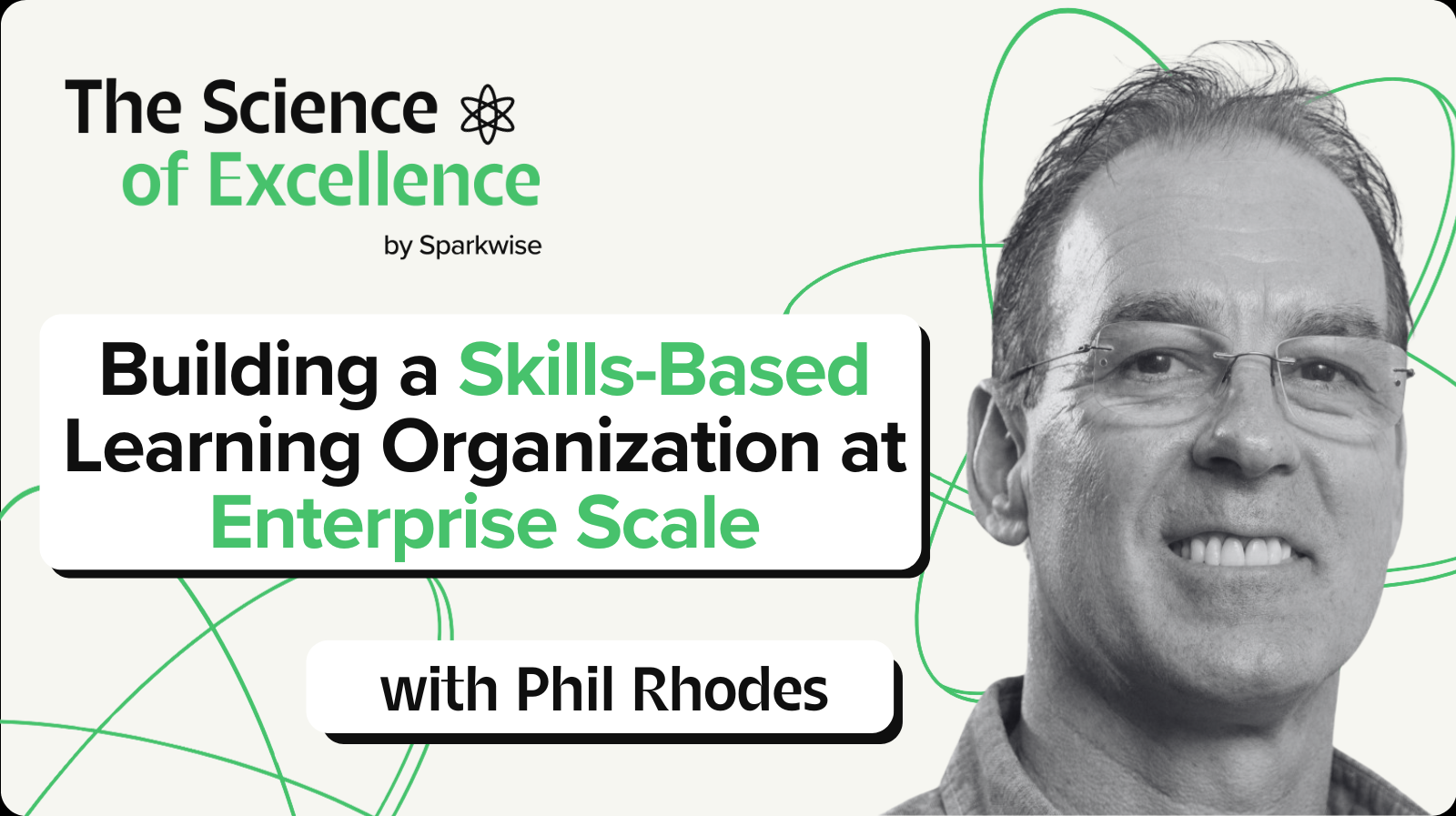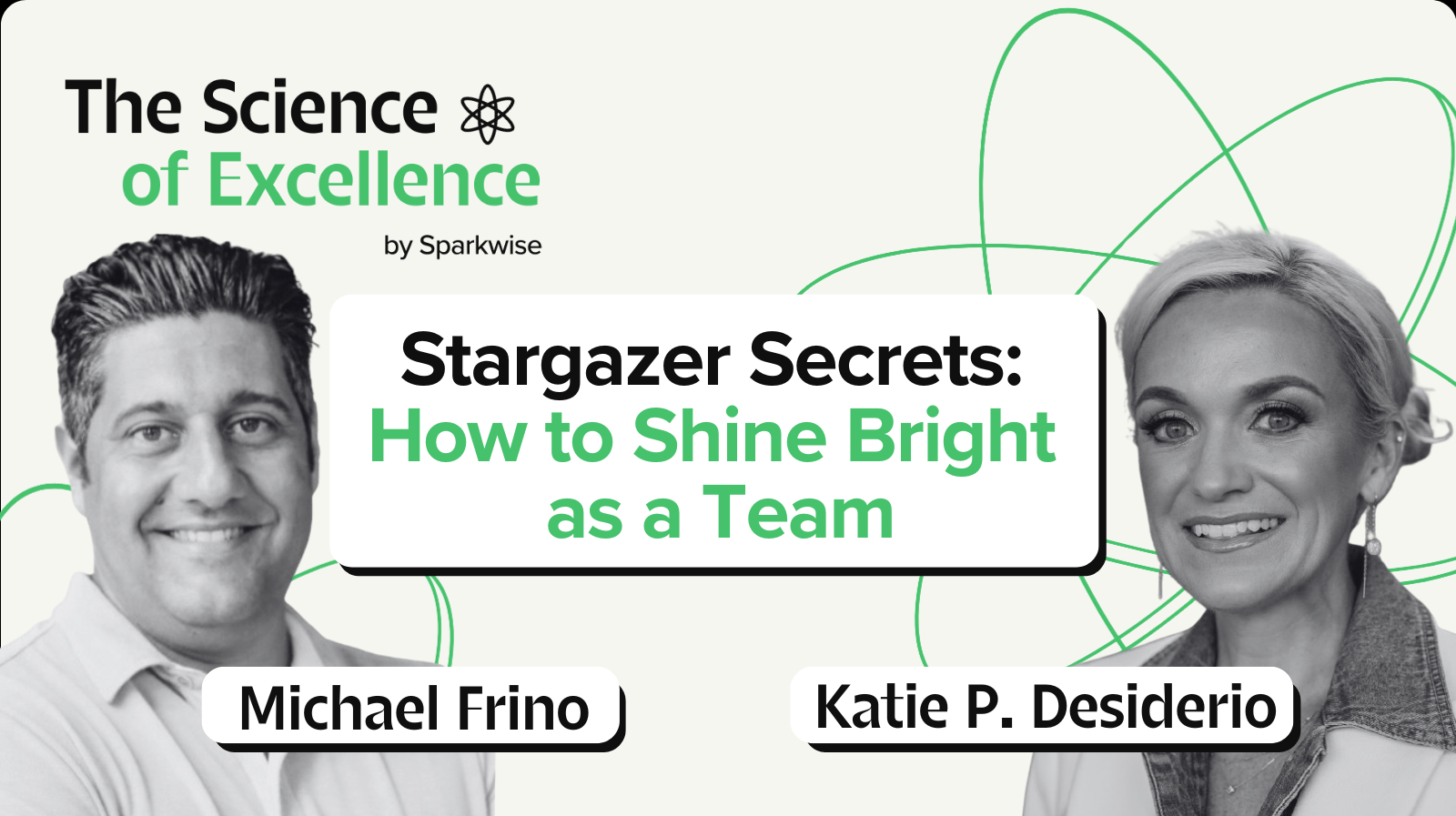In this episode of The Science of Excellence, I sat down with Arkesh Mishra, who leads skills-based transformation for Walmart's 12,000-person tech organization. He's spent years building a capability framework that connects skills to hiring, rewards, promotions, and learning—and now he's refreshing it for AI.
Our conversation explored why skills have become essential for AI adoption. Arkesh shared how his team is using frameworks like Stanford's Human Agency Scale to map which AI tools help with which tasks, how work is shifting from creation to review, and why clarity about higher-order work determines whether people embrace or resist AI.
These 5 insights stood out from our conversation:
- Connect AI to Jobs via Skills
- Break Work Into Three Parts
- Use the Human Agency Scale to Map Tasks
- Lead AI Adoption with Specific Examples
- Show People the Higher-Order Work That AI Unlocks
1. Connect AI to Jobs via Skills
In Arkesh's Words: "Skills basically outline what knowledge do you need to deliver which tasks. When you look at AI coming in, one of the primary problems any organization would want to solve is understanding this universe of AI tools available, the universe of skills a job requires, and then being able to connect the two. There are two parts to the equation. One part is the tools understanding and how AI tools help. The second part is how do AI tools help in the job? To understand that part, that's where skills come in."
Organizations face a connection problem. You have AI tools on one side and job requirements on the other. Skills are what link them together.
Think of skills as the translation layer. When you define what knowledge someone needs for a specific task, you can then identify which AI tool helps with that task. Without this mapping, employees experiment randomly with tools, adoption stays scattered, and you can't scale impact. Skills give you the language to move from abstract "AI transformation" talk to concrete conversations about which tools help with which work.
2. Break Work Into Three Parts
Work has three layers: thinking/structure, creation, and refinement. Before AI, experienced people skipped the first layer—it was automatic—and jumped to creating. AI flips this. Now AI handles creation, pushing you back to spend more time on the thinking that comes before.
This rebalancing is subtle but significant. The skill isn't typing anymore—it's the strategic thinking about what needs to be communicated and why. That's harder to train and takes longer to develop.
Here’s an example Arkesh provided: "There are three parts to creating communication. One is the meta-thinking—putting the structure in place, what am I trying to solve for, what are the messages I want to send. Then comes the actual message you have to craft. Then comes the finesse on top of it. For the last 10-15 years, we don't spend a lot of time in the first one because it's wired into our thinking. We jump straight into crafting the message. Now when you're using ChatGPT, you're going back and putting more effort into meta-thinking, because it's going to generate the body of the communication where you would end up spending a lot more time."
3. Use the Human Agency Scale to Map Tasks
In Arkesh's Words: "Stanford created a scale of H1 to H5. H1 and H2 are basically AI-led tasks where the AI actually completes the task and human involvement is very low. H3 is where there is equal partnership between AI and human. And H4 and H5 are basically human-led tasks to completion. What became very clear was H1 and H2—tasks like communication or initial first drafts—that's where we are seeing the maximum use of gen AI tools come in."
The Human Agency Scale gives you language to discuss AI's role in specific work. Initial drafts and frameworks sit at H1-H2. Tasks requiring human interface and emotional understanding stay at H4-H5. Analysis falls somewhere in the middle.
This framework moves you from vague guidance to specific direction. Instead of "use AI more," you can identify which tasks in someone's job sit at different levels and suggest appropriate tool usage. It helps people understand nuance rather than treating all work the same.
4. Lead AI Adoption with Specific Examples
In Arkesh's Words: "There are three parts to change management. One is leaders leading by example. The second is constantly reiterating that we want you to use these tools and we will support you. And third is actually training people on the use cases, bringing people together, creating a community of experts who can guide them. Our leaders have been constantly messaging and leading with examples saying, 'I use ChatGPT for this, I use Copilot for this.'"
Leaders need to share specific usage, not just conceptual support. When they say "I use ChatGPT for this communication" or "I use Copilot for this code," it makes adoption concrete.
The community piece matters too. Bringing engineers together to share how they use tools in development and testing creates peer learning. People see real applications in their domain rather than generic AI demonstrations that don't translate. Real examples from actual work beat polished use cases every time.
5. Show People the Higher-Order Work That AI Unlocks
In Arkesh's Words: "In jobs where the higher order tasks are not clear, that's where there's a little bit more resistance in terms of gen AI adoption. And jobs where the higher order tasks are a lot more clearer and there is visibility towards it, the pull factor is a lot more higher. My team is super excited about using gen AI tools because if they do that, they'll be able to focus a lot more on the strategic aspects and the org design and the leadership building aspects."
People embrace AI when they see what replaces automated work. Arkesh's team pulls AI tools in because they know it frees time for strategy, org design, and leadership development. Teams without that clarity resist because AI feels threatening.
This explains varying adoption across roles. The solution isn't better AI tools or more training. It's clearer articulation of the work that becomes possible when AI handles routine tasks. Give people something meaningful to move toward.
Until next time,
Vince







.png)


.png)
.png)









.png)












.png)